Fareham
Explore hidden histories, historic photos, and things you never knew about Fareham from the collections and archives of Historic England.
Discover your local listed buildings and places
Introducing some of Fareham's most historic sites, included in the National Heritage List for England. Some of these captions have been summarised by AI. Click through for the official List entry. Skip this section and go to place by numbers
Cadets' residence (Hudson, Shackleton and Wilson), linked…
Locks Heath
A former cadets' residence (Hudson, Shackleton and Wilson), linked walkway, and refectory block (Moyana), of 1959-1961, by Sheppard, Robson and Partners.
Monastic Barn of Titchfield Abbey at Fern Hill Farm
Locks Heath
A medieval monastic timber-framed, aisled barn with hipped tiled roof. The barn is approximately 50m long by 15m wide, with timbers dated by dendrochronology to 1407-1409.
Church of St Paul
Locks Heath
c.1836 by George Guillaume, with chancel and south chapel by George Fellowes Prynne added in 1880 and 1922 respectively. North-east vestry extended 1908.
Church of St Francis
Fareham
1836 with later alterations, architect probably Jacob Owen. Read the official list entry to find out more.
Haven Cottage
Lee-on-the-Solent
Cottage and former outbuilding of the C17 and C19. Read the official list entry to find out more.
Holy Rood Church
Lee-on-the-Solent
Parish church, 1877-8 by Thomas Goodchild, tower completed 1928, chancel rebuilt 1971, church centre (not of special interest) added 1991. Read the official list entry to find out more.
Stubbington War Memorial
Lee-on-the-Solent
First World War memorial of 1922, built by Arthur Tribbeck. Read the official list entry to find out more.
Bishopsgrove
Fareham
Detached house, late 1860s, by George Rake, with extension to west of 1997 and other minor late C20 additions and alterations. Read the official list entry to find out more.
The Grange
Fareham
House, late 1860s, by George Rake. With minor later alterations to the rear including the addition of a C20 conservatory. Read the official list entry to find out more.
Explore more
Search for more listed placesFareham through time
This timeline shows the first period of use for buildings and places on the National Heritage List for England, just one of the details recorded for every list entry. Click around to see how Fareham changes over time. Skip this section and go to aerial photos
Roman AD 43 to AD 410
Britain was invaded by four legions of the Roman army in AD 43, who relatively rapidly conquered England from landing points in Kent. Parts of Wales and Scotland soon followed.
Roman culture brought urbanism, monumental buildings, wide-ranging religious beliefs, writing, and strong social hierarchy. The Roman administrative system was withdrawn in AD 410.
Early medieval AD 410 to AD 1066
This period, often associated in England with Anglo-Saxons and Vikings, saw a reduction in urban living from the Roman period and increased migration from northern Europe.
Traces of this period can be found in cemeteries, particularly in artefacts and in some of the very early churches, as this period also saw the growth of Christianity in Britain.
Medieval AD 1066 to AD 1540
This period, sometimes known as the Middle Ages, began with the Norman invasion in AD 1066. It saw a significant rise in military and defensive buildings such as castles and earthworks, as well as religious houses dominating a largely agricultural landscape.
The monarchy and Church dominated the period, which also saw the break with the Roman Catholic Church and the English reformation.
Post medieval AD 1540 to AD 1901
The Post-Medieval period brought seismic changes to life in England, with religious reformation leading to the democratization of worship and the destruction of hundreds of religious houses.
In parallel, there was a huge expansion of scientific study and enlightenment that permanently altered the nation's social structure and landscape. Industrialization and mass production lead to wider global trade, emigration, and immigration.
20th century AD 1901 to AD 2000
The 20th century saw an incredible expansion of England's transport networks, with suburban growth shadowing rapid infrastructural expansion. The establishment of state schools, hospitals, and modern technical colleges, with new architectural styles, radically changed the appearance of towns and cities.
Two catastrophic world wars and the 1918 pandemic also brought unprecedented change, altering England's built environment and social structures forever.
Roman AD 43 to AD 410
Britain was invaded by four legions of the Roman army in AD 43, who relatively rapidly conquered England from landing points in Kent. Parts of Wales and Scotland soon followed.
Roman culture brought urbanism, monumental buildings, wide-ranging religious beliefs, writing, and strong social hierarchy. The Roman administrative system was withdrawn in AD 410.
Early medieval AD 410 to AD 1066
This period, often associated in England with Anglo-Saxons and Vikings, saw a reduction in urban living from the Roman period and increased migration from northern Europe.
Traces of this period can be found in cemeteries, particularly in artefacts and in some of the very early churches, as this period also saw the growth of Christianity in Britain.
Medieval AD 1066 to AD 1540
This period, sometimes known as the Middle Ages, began with the Norman invasion in AD 1066. It saw a significant rise in military and defensive buildings such as castles and earthworks, as well as religious houses dominating a largely agricultural landscape.
The monarchy and Church dominated the period, which also saw the break with the Roman Catholic Church and the English reformation.
Post medieval AD 1540 to AD 1901
The Post-Medieval period brought seismic changes to life in England, with religious reformation leading to the democratization of worship and the destruction of hundreds of religious houses.
In parallel, there was a huge expansion of scientific study and enlightenment that permanently altered the nation's social structure and landscape. Industrialization and mass production lead to wider global trade, emigration, and immigration.
20th century AD 1901 to AD 2000
The 20th century saw an incredible expansion of England's transport networks, with suburban growth shadowing rapid infrastructural expansion. The establishment of state schools, hospitals, and modern technical colleges, with new architectural styles, radically changed the appearance of towns and cities.
Two catastrophic world wars and the 1918 pandemic also brought unprecedented change, altering England's built environment and social structures forever.
Aerial photos of Fareham
Aerial photography helps reveal secrets of England's changing landscapes that are impossible to see from the ground. Skip this section and go to archive images
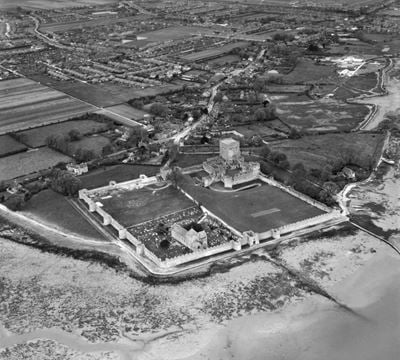
Portchester
Portchester Castle and Roman Fort, Portchester, 1947

Portchester
Portchester Castle, Portchester, 1948

Titchfield
The village, Titchfield, 1949

Titchfield
The village, Titchfield, 1949
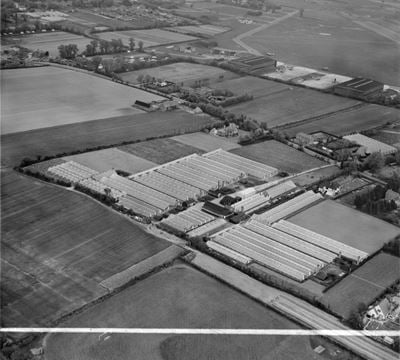
Stubbington
The Nursery on Stubbington Lane, Stubbington, 1952
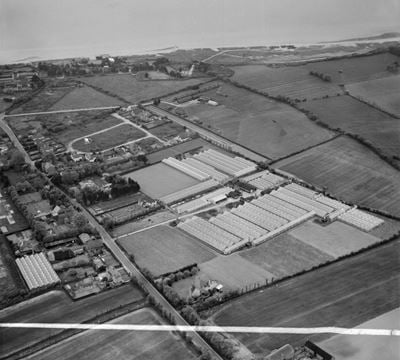
Stubbington
The Nursery on Stubbington Lane, Stubbington, 1952

Sarisbury
Solent Shipyards Ltd boatyard on the River Hamble, Sarisbury, 1952
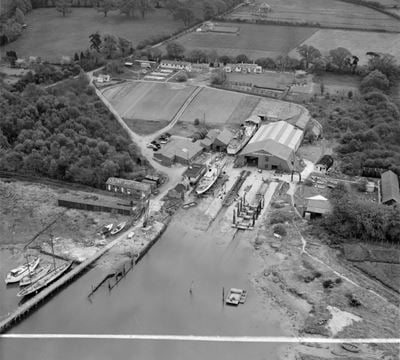
Sarisbury
Solent Shipyards Ltd boatyard on the River Hamble, Sarisbury, 1952
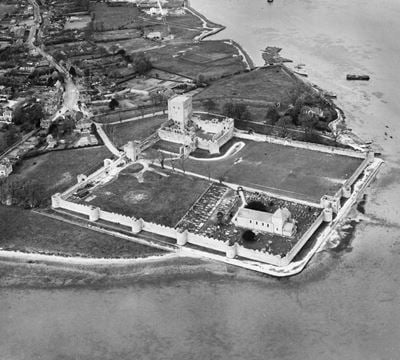
Portchester
Portchester Castle and St Mary's Church, Portchester, 1948
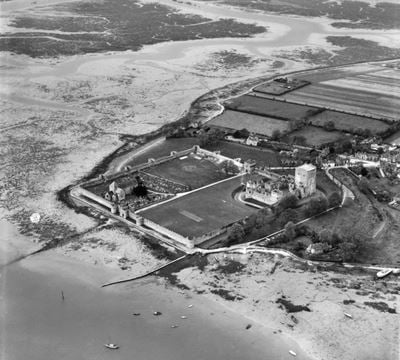
Portchester
Portchester Castle and Roman Fort, Portchester, 1947
Fareham in the Historic England Archive
The Historic England Archive cares for over 15 million images, dating from the 1850s to the present day. Discover stunning images of Fareham's past. Skip this section and go to stories about heritage
John Laing Collection
Peel Common, Fareham, Hampshire
Date created: 30 Nov 1979
A view of reinforced concrete base slabs for humus tanks during the construction of Peel Common Sewage Works
John Laing Collection
Peel Common, Fareham, Hampshire
Date created: 19 Jul 1978
A view of partially constructed sheet pile walls on the construction site of Peel Common Sewage Works
John Laing Collection
Peel Common, Fareham, Hampshire
Date created: 11 Oct 1978
A view of the construction site for Peel Common Sewage Works, showing a reinforced concrete structure being built in the foreground
John Laing Collection
Peel Common, Fareham, Hampshire
Date created: 30 Apr 1979
A view of reinforced concrete structures, possibly storm tanks, under construction at Peel Common Sewage Works
John Laing Collection
Peel Common, Fareham, Hampshire
Date created: 06 Jun 1978
A view of precast concrete units for the outfall of the Peel Common Sewage Works at Browndown, with workers constructing tracks for their...
John Laing Collection
Peel Common, Fareham, Hampshire
Date created: 19 Jun 1978
A worker assisting with the placement of a section of underground piping during the construction of Peel Common Sewage Works
John Laing Collection
Peel Common, Fareham, Hampshire
Date created: 28 Jun 1979
A view of reinforced concrete base slabs for humus tanks during the construction of Peel Common Sewage Works
John Laing Collection
Peel Common, Fareham, Hampshire
Date created: 21 Jun 1978
A group of workers toasting the launch of a twin barge from Woolston, for use in the construction of an outfall at Browndown for the Peel Common...
John Laing Collection
Peel Common, Fareham, Hampshire
Date created: 11 Oct 1978
Foundation work in progress on the construction site of Peel Common Sewage Works, showing an excavated area containing piles with exposed...
John Laing Collection
Peel Common, Fareham, Hampshire
Date created: 30 Apr 1979
A view of the construction site for Peel Common Sewage Works, showing partially constructed reinforced concrete structures
John Laing Collection
Peel Common, Fareham, Hampshire
Date created: 17 Aug 1978
A view of the construction site for Peel Common Sewage Works, showing steel reinforcements in an excavated area
John Laing Collection
Peel Common, Fareham, Hampshire
Date created: 06 Jun 1978
A view of large precast concrete units for an outfall at Browndown for the Peel Common Sewage Works
Stories about heritage in your local area
Historic England publishes news, blogs, research, videos, and podcasts celebrating England's rich heritage. Discover the stories we have about Fareham. Skip this section and go to education
Battles, Castles and Ships: England’s Military History from the Air
Mentions Portchester Castle
Discover England's military history through aerial photography from the Aerofilms Collection.
Research Reports Roundup February 2025
Mentions Fareham
A roundup of the latest additions to our research reports database from October 2024 to February 2025, arranged by theme.
Fareham's social history through photos
Over 10,000 images from the Historic England Archive have been specially selected and re-captioned for teachers, students, and anyone who wants to learn more about their local area. Skip this section and go to grant-aided places
Theatre at Portchester Castle, Portchester, Hampshire
Period: Georgian (1714 - 1836)
A reconstruction drawing of the theatre showing its design in relation to the present viewing platform.
Theatre at Portchester Castle, Portchester, Hampshire
The Water Gate, Portchester Castle, Portchester, Hampshire
Period: Medieval (Middle Ages) (1066 - 1484)
The Water Gate (or Sea Gate) was originally part of the Roman defences of Portchester Castle.
The Water Gate, Portchester Castle, Portchester, Hampshire
The Land Gate, Portchester Castle, Portchester, Hampshire
Period: Medieval (Middle Ages) (1066 - 1484)
The Land Gate was originally part of the Roman defences of Portchester Castle. However, most of what remains of it today dates from the 1300s.
The Land Gate, Portchester Castle, Portchester, Hampshire
The Keep, Portchester Castle, Portchester, Hampshire
Period: Medieval (Middle Ages) (1066 - 1484)
These are Elevations (front on drawings) showing the keep at Portchester Castle.
The Keep, Portchester Castle, Portchester, Hampshire
Saxon Water Gate, Portchester Castle, Portchester, Hampshire
Period: Anglo Saxon (Britons/English/Vikings) (410 - 1065)
The Water Gate (or Sea Gate) was originally part of the Roman defences of Portchester Castle.
Saxon Water Gate, Portchester Castle, Portchester, Hampshire
Priory Latrines, Portchester Castle, Portchester, Hampshire
Period: Medieval (Middle Ages) (1066 - 1484)
Priory Latrines, Portchester Castle, Portchester, Hampshire
Priory Latrines, Portchester Castle, Portchester, Hampshire
Portchester Castle (Portus Adurni), Portchester, Hampshire
Period: Roman (43 - 409)
Portchester Castle was originally built as a shore fort in the late Roman period. This fort was called "Portus Adurni".
Portchester Castle (Portus Adurni), Portchester, Hampshire
Meon Marsh Sealock, Fareham, Hampshire
Period: Stuart (1603 - 1713)
The lock is believed to have been completed in 1611.
Meon Marsh Sealock, Fareham, Hampshire
Discover more
Ready for more local heritage? Take a look at these other places nearby

Gosport
Local Authority District
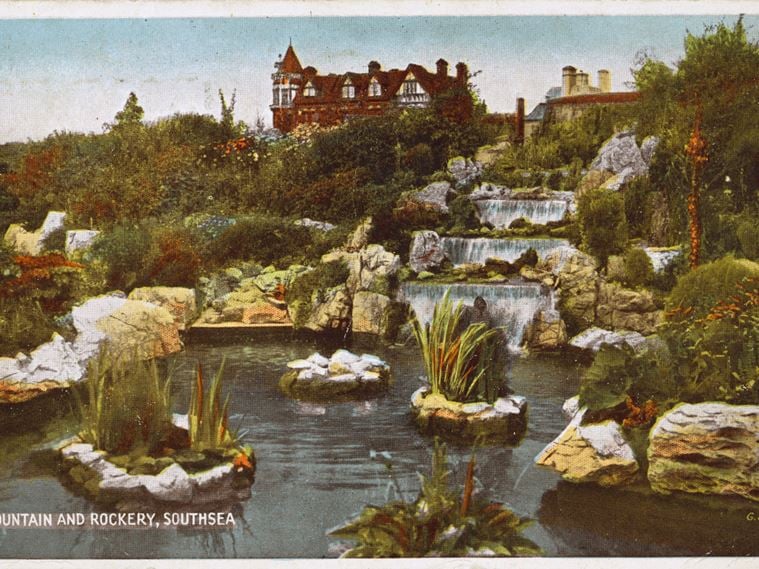
Portsmouth
Local Authority District
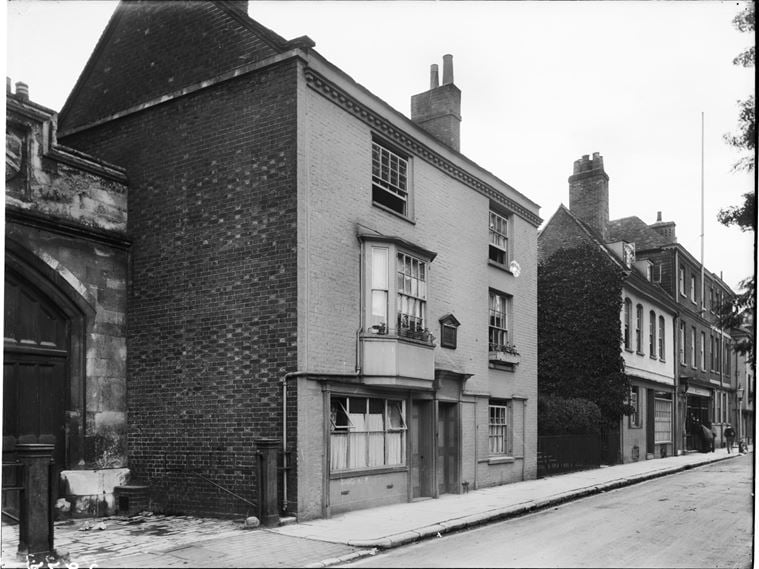
Winchester
Local Authority District